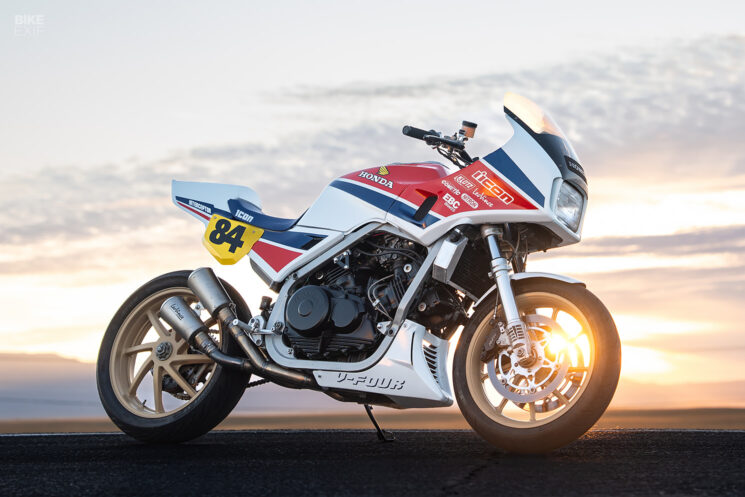
As far as 80s sportbikes go, the Honda VF1000F Interceptor often gets overshadowed. Riding on the success of the VF750F, Honda introduced the VF1000F to expand their V-four lineup and offer a sport-touring option for riders craving more power and range. But the VF1000F never quite matched the popularity of the 750, and was outgunned by rivals like the Kawasaki GPz900R Ninja.
Still, the VF1000F holds a special place in Honda’s history, since it served as a crucial stepping stone to the legendary VFR series. It’s also hard to look at the old Interceptor now, 40 years on, and not feel a wave of nostalgia for this underappreciated machine.
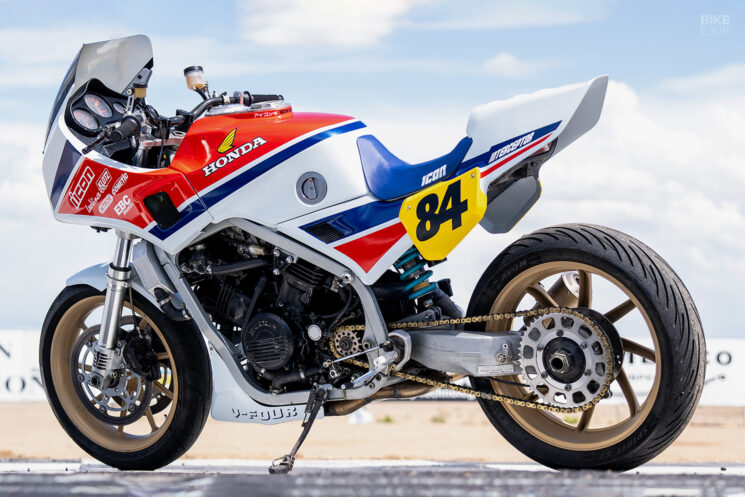
This gnarly Honda VF1000F Interceptor restomod is the work of ICON Motosports in Portland, Oregon, USA. ICON’s motorcycle gear has one foot in the past and one in the future, so it’s no surprise that the crew was starstruck with the Interceptor in its heyday—especially in its timeless HRC livery.
With a 1984-model Interceptor on the bench, ICON had the arduous task of getting the aging Honda’s motor up to par before moving on to the fun stuff. It took almost a decade to source all of the parts needed to revive the tired old V-four, with most of them coming from three additional VF1000F donors. (Appropriately, the bike was quickly dubbed ‘New Found Hope.’)
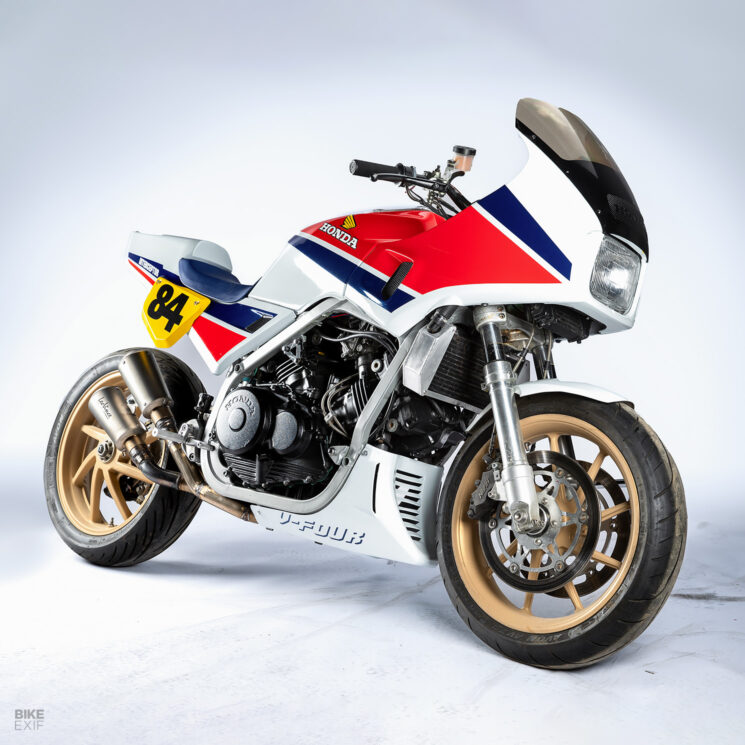
With the Interceptor’s engine once again ready to be revved beyond reason, ICON turned its attention to the bike’s running gear. The forks were swapped out for a superior set of Honda CBR900RR items, chosen for their burlier stanchions and traditional right-side-up configuration. The CBR also donated its twin Nissin disc brakes.
Out back, the crew massaged the single-sided swingarm and rear wheel from a Honda VFR400 into place. A Nitron piggyback shock was tucked in beneath the VF1000F’s bodywork, hooked up via a bespoke adaptor plate. Finally, a Ducati Diavel front wheel was slapped on, for no other reason than to match the spoke count of the rear wheel.
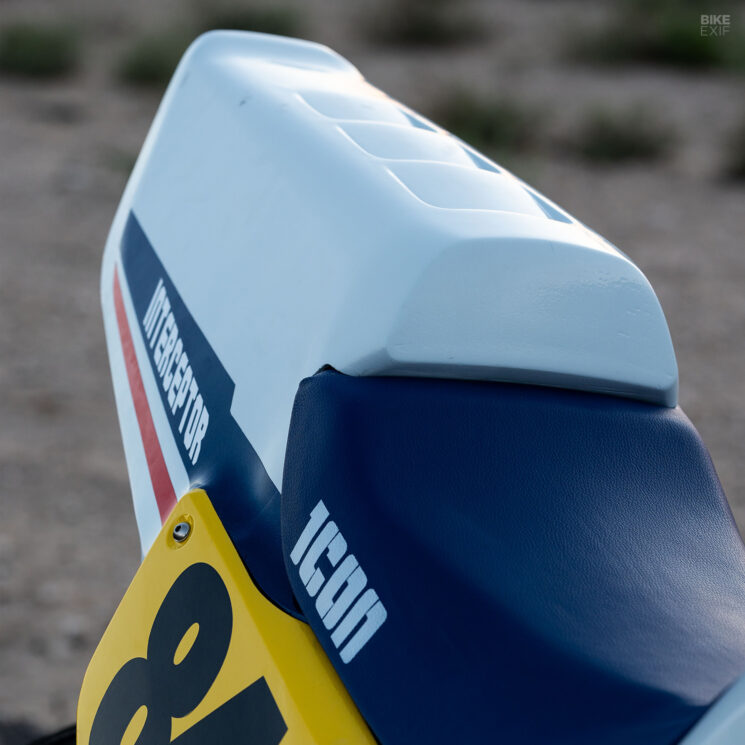
Moving to the bodywork, ICON decided to focus exclusively on the tail end of the Interceptor. Their reasoning was that “the distinctive mid-80s bodywork was a thing of beauty in the mid-80s, and still is.” So the VF1000F’s fairing, windscreen, fuel tank, and belly pan are all original parts.
Out back, the crew tore apart the OEM tail section, shortened it, and dressed it with fiberglass-reinforced 3D-printed sections. The subframe underneath the bodywork has been trimmed, the taillight has been pushed deeper into the bodywork, and the passenger accommodations have been replaced by a louvered tail hump. Racy number boards hang from the side, paying homage to the Interceptor’s year of inception.

Other modifications include an endurance-style filler cap atop the fuel tank, updated oil lines, and custom-made aluminum radiator shrouds. Handmade stainless steel exhaust headers terminate in a pair of salvaged Leo Vince cans, which have been modified with billet aluminum baffles.
The VF1000F’s stock clocks still sit behind the high-riding fairing; battered and bruised, but still ticking. The handlebars are tapered carbon fiber numbers that ICON rescued from their parts bin. The top yoke was modified to house a set of MX-style bar clamps, and the bars were outfitted with Brembo clutch and brake controls.

Wrapping the Interceptor are new graphics that pay tribute to HRC’s tried-and-true red, white, and blue. As an American company, that particular color scheme was irresistible…
“As youths, we gazed at the patriotic liveries of the Interceptor offerings,” reads ICON’s ode to the venerable VF. “They were from a time when Honda took chances—when red, white, and blue dominated in both tech and style. It was the dawn of the sportbike, and there would never be another.”
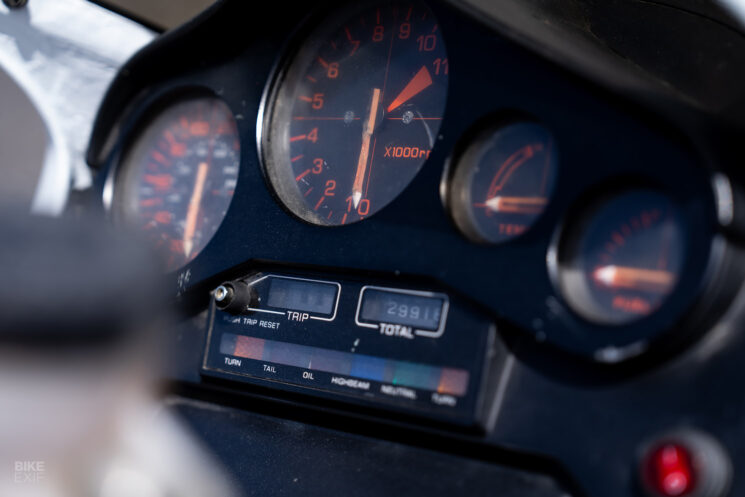
“For 40 years, we’ve chased the feeling that 1984 gave us—40 years of longing for the same adolescent desire. And in New Found Hope, we found it.”
ICON Motosports | Facebook | Instagram
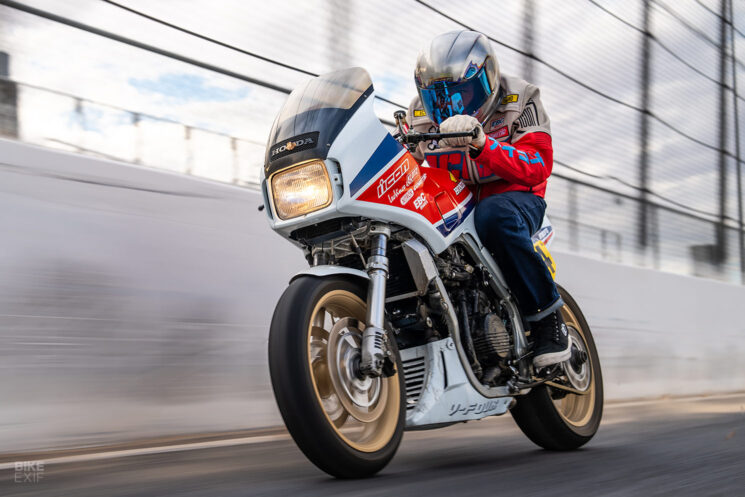
from Bike EXIF https://ift.tt/UKsAVHc
No comments:
Post a Comment